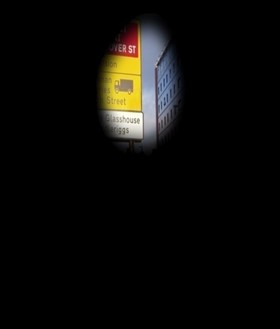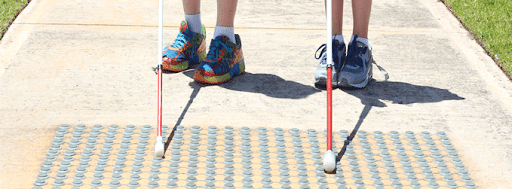Helping to create spaces where people with vision can navigate, negotiate, and identify features within the built environment
This year on 8 October, it was World Sight Day. An annual day of awareness to focus global attention on blindness and vision impairment.
World Sight Day was launched in 2000. The objective of this event is to raise awareness about blindness and vision impairment for VISION 2020: The Right to Sight, a global initiative created by WHO (World Health Organisation) and the International Agency for the Prevention of Blindness (IAPB).

In Australia there are more than 453,000 people that are blind or vision impaired (The National Eye Health Survey 2016, WHO). The term blind does not necessarily mean total loss of vision. 82% have some residual vision, 14% has some light perception and 4% see nothing at all. Types of vision loss can include, central vision loss, peripheral vision loss, mixed vision loss and blindness.
Our role as Access Consultants is to help create spaces where people with vision loss can navigate, negotiate, and identify features within the built environment. We do this by working with Architects, Designers, Builders, Local Government and other government bodies, many private organisations and directly with the end user.
We have significant expertise and able to provide specialist advice and solutions to achieve access within the built environment for vision impaired people. All our advice incorporates ‘common sense’ and the current regulations that govern access for people with disabilities. These being; Disability Discrimination Act (1992), Building Code of Australia, and Australian Standards.
Luminance Contrast testing is a valuable tool Architecture & Access use when providing access advice and solutions for vision impairment. People with a vision impairment rely on visual cues and distinguishing features to navigate, negotiate, and identify features within the built environment.
Luminance Contrast is the light reflected off one surface compared to the light reflected off another surface, The higher the value, the higher the contrast. The AS 1428.1 Design for Access Mobility Standards includes specific testing requirements. Our Access Consultants can provide accurate measurements to ensure compliant outcomes are achieved. A variety of tools and formulas are utilised to measure Luminance Contrast. These tools include Spectrophotometer / Tristimulus colorimeter, Single lens reflex luminance meter / photometer and supported by laboratory testing.
Luminance Contrast is very important as it is a way of detecting hazards and assists with wayfinding. The standards require certain design elements to provide a minimum luminance contrast of 30% between adjacent surfaces. These design elements include stair nosing strips, tactile indicators, visual indicators, door/frame and or wall, accessible toilet seat and tactile and braille.
Stair nosing strips are to vision impaired as a ramp is to a wheelchair user. Stair nosing strips allow vision impaired people to locate the edge of the tread on a stairway.
Tactile indicators are all over the place in the public environment. They assist vision impaired pedestrians to navigate the urban environment and provide advanced visual and tactile indication of upcoming hazards.
Visual indicators on glazing make the invisible visible. A contrasting border applied to the base of glazing provides an indication of a hazard and denotes the path of travel.
People with a vision impairment also use accessible sanitary facilities. Accessible toilet seats and surroundings must have a minimum 30% luminance contrast against surfaces.
In line with the standards, signage is extremely important. Signage consideration examples include the contrast between the sign and the background surface and braille and raised tactile signage.
Architecture & Access also recommend providing a minimum 30% luninance contrast with the following enhanced items:
| Furniture | Switches and Controls | Counters | Swimming Pools |
| Floor and wall surface | Handrails and grabrails | Door handles | Street furniture |
Architecture & Access promote independence an quality by working to create environments where people with disability can access businesses, accommodation, employment, education, sport, and transport and move as freely as possible within the community.
